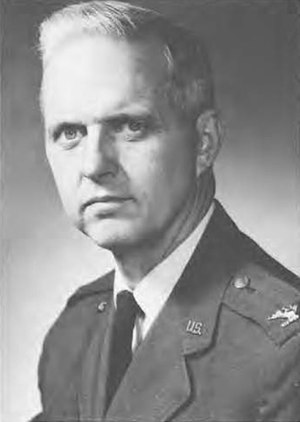Sharp as a tackby Dwayne A. Day
|
| I took an instant liking to him because he seemed to have an attitude that is rarer than it should be: an evidence-based view of the world. |
In 1958 Buzard—known as “Buzz” to his coworkers—was a captain assigned to the Discoverer program, the cover for the effort to develop the CORONA reconnaissance satellite. The CIA was responsible for developing the photographic payload and the Air Force was responsible for handling just about everything else. Buzz’s job was the Thor launch vehicle. The first attempt to launch a Discoverer vehicle, without a classified CORONA camera payload, had puttered out during a ground test, when the rocket malfunctioned and nearly blew up with people standing around. That effort became known as “Discoverer Zero,” and it was not known to the public.
Discoverer One also failed in secret, in public. Buzard explained what happened.
On February 28, 1959, the Air Force launched Discoverer One from Vandenberg Air Force Base in California. This was a Thor Agena launch, with a modified Thor intermediate range ballistic missile serving as the first stage and an Agena serving as the second stage. The Thor performed normally, then the Agena separated and it too performed normally, at least as far as they could track it.
After the Agena sailed over the horizon, and a tracking station reported hearing a beep, the Air Force issued a press release stating that the satellite was in orbit. But the satellite was not spotted again. Buzard and another officer were told to look at the data and “prove that it was in orbit.” They weren’t told to determine if it was in orbit. After all, the Air Force had already stated that it was, and the Air Force was never wrong. So Buzz and his fellow officer gathered up all the data they could, squinted really hard at it, and declared that yes, Discoverer One was in orbit.
But they didn’t believe it.
What Buzz explained to me was that the data at the tracking station was noisy and they never had a clear, unambiguous signal. A lot of people simply assumed that because the Agena had operated properly for over half of its burn time, it probably continued to operate all the way to orbit.
As I sat in Buzz’s Rancho Palos Verdes home in the mid-1990s I asked the novice question: “But isn’t that a reasonable assumption?”
“No. That’s a bad assumption!” Buzard replied. Lots of things can still go wrong during powered flight. The Agena could have run out of fuel short of its target velocity. Or it could have been pointed in the wrong direction by as little as one degree, just enough to fall back to Earth. The lesson of that launch, Buzard explained, was to get tracking data all the way to orbit.
There were lots of lessons, because there were lots of failures. Buzard explained that General Bernard Schriever, who was then in charge of the ballistic missile program as well as the Air Force’s space launch program, regularly held “Black Saturday” meetings where they discussed launch failures among other things. They used the meetings to figure out how to fix the problems and move on. After Discoverer One, they improved their tracking.
| We can only hope that somewhere in the files of the NRO there are tape recorded interviews with him about his work on these vital programs, because based upon my limited time talking to him about CORONA, he must have had some great stories to tell. |
Buzard then walked me through all the other CORONA failures until their final success on the thirteenth launch. He knew what had happened on each of them, and he explained how they had fixed the problem and then moved on. He explained how he was convinced that Discoverer Two came down in the ocean instead of falling on tiny Spitzbergen Island in the Arctic and being recovered by a Soviet team and placed on a fishing trawler. I mentioned that there were reports that the trawler had “suddenly left port.” Buzard replied that the trawler may have “suddenly left port” every day at that time. It was clear from his attitude that Buzard was the kind of guy who didn’t accept anecdotes as a substitute for data, exactly the kind of guy you’d want as your launch manager.
Somebody told me that Buzard had been the program manager on the CORONA follow-on program, named HEXAGON. As I was leaving that day, I said that I wanted to return to interview him about that. We hoped that he could talk about it in a few years. The declassification was initially scheduled for the late 1990s, but eventually delayed until September 2011. Although I hoped to interview him about his work on HEXAGON, I never got the chance.
For his service, Buzz received the Legion of Merit Medal, the Air Force Distinguished Service Medal, the Air Force Commendation Medal, the Army Commendation Medal, the Air Force Space and Missile Pioneers Award, and in 2001 he was selected for membership in the Air Force Space and Missile Pioneers Hall of Fame. He was also designated as a Pioneer of National Reconnaissance by the National Reconnaissance Office (NRO). We can only hope that somewhere in the files of the NRO there are tape recorded interviews with him about his work on these vital programs, because based upon my limited time talking to him about CORONA, he must have had some great stories to tell.
